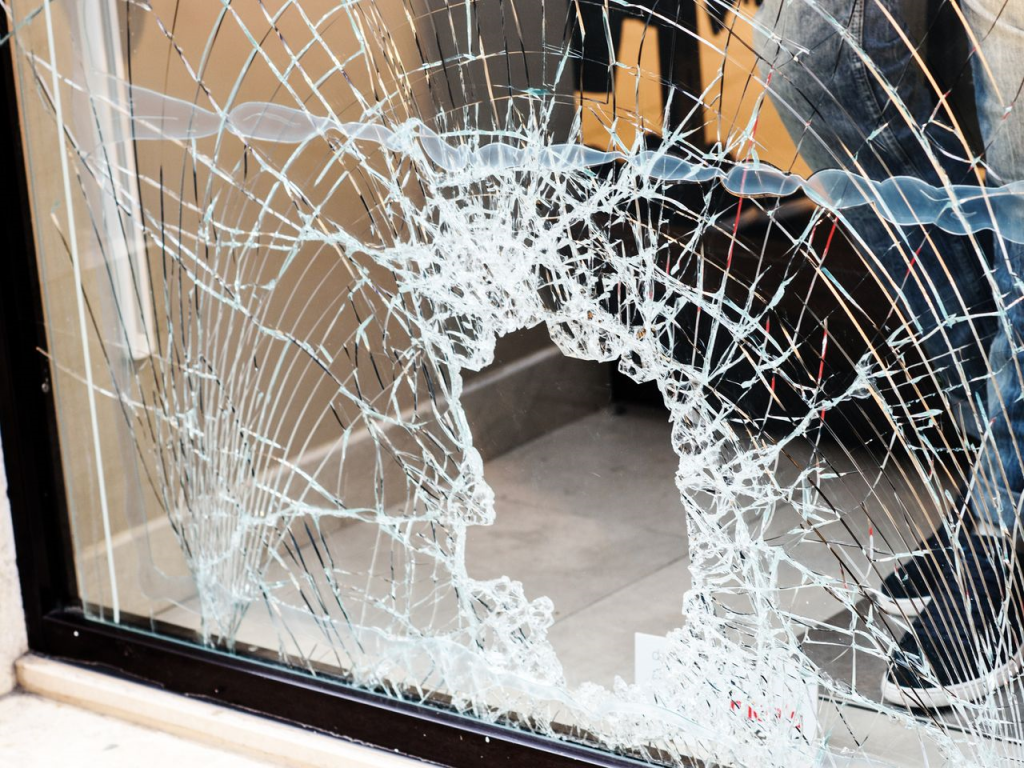Broken Windows is a crime theory which postulates that minor signs of disorder in a neighborhood, left unchecked, can result in more severe disorder and ultimately serious crime.[i] Broken Windows was coined in 1982 by James Q. Wilson and George L. Kelling, professors at Harvard and Rutgers, respectively. Kelling and Wilson laid out their theory in The Atlantic magazine, stating, “If the windows are not repaired, the tendency is for vandals to break a few more windows. Eventually, they may even break into the building, and if it’s unoccupied, perhaps become squatters or light fires inside.”[ii] One of the key concepts behind Broken Windows is that the presence of a police officer, conducting patrols of an area and engaging in activities to decrease social disorder (formal controls), will increase normal behavior and make the area suitable for the area’s residents and business owners to implement informal controls.
While finding its strongest supporters among New York City leaders in the 1990s, the Broken Windows concept has been controversial since its inception.[iii] Kelling himself participated in the debate, criticized those who misapplied the concept, and further clarified the Broken Windows idea in a criminology journal more than 30 years after conceiving the idea.[iv] The concept of police officers patrolling to prevent social disorder has been researched and tested extensively by way of randomized control experiments; however, as discussed in Chapter 8 of Unraveled, the majority of the research shows that police patrols have little to no effect on preventing violent crime. Further, several empirical studies report no significant relationship between disorder and more serious crime (e.g. violence),[v] the foundation upon which Broken Windows was built, and many subsequent studies have shown that broken windows policing (including “stop-and-frisk” practices) resulted in adverse consequences, particularly for minority and economically disadvantaged communities. Stop-and-Frisk is the practice of temporarily detaining, questioning, and possibly searching civilians on the street who police suspect of possessing weapons or contraband. After years of pressure, the New York Police Department discontinued Broken Windows Policing in 2013. Notably, after this policy change, crime levels in New York remained stable and eventually decreased slightly.[vi] [vii]
[i] https://www.popcenter.org/content/glossary-0
[ii] Kelling, G. L., & Wilson, J. Q. (1982, March). Broken Windows: The police and neighborhood safety. The Atlantic.
[iii] Neklason, A. (2019, May). The ‘Broken Windows’ debate survives its creators. The Atlantic.
[iv] Kelling, G. (2015). An author’s brief history of an idea. Journal of Research in Crime and Delinquency, 52(4) 626-629. https://doi.org/10.1177/0022427815578175
[v] Weisburd, D. et al. (2016), Place matters: Criminology for the twenty-first century. Cambridge University Press.
[vi] Kohler-Hausmann, I. (2018). Misdemeanorland: Criminal courts and social control in an age of broken windows policing. Princeton University Press.
[vii] Abt, T. (2019). Bleeding out: The devastating consequences of urban violence–and a bold new plan for peace in the streets. Basic Books.
Read more in Unraveled: An Evidence-Based Approach to Understanding and Preventing Crime:
Amazon (Hardcover): https://www.amazon.com/dp/B09M544HHV
Amazon (Paperback): https://www.amazon.com/dp/B09QNYN7SQ
Amazon (Kindle): https://www.amazon.com/dp/B09PMP8V82
Apple: https://books.apple.com/us/book/id1601745187
Google: https://play.google.com/store/books/details/Karim_H_Vellani_Unraveled?id=eTZQEAAAQBAJ
Barnes & Noble: https://www.barnesandnoble.com/w/unraveled-karim-vellani/1140811714





